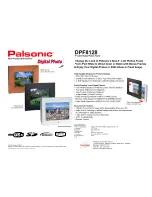
Palette, plus the
Color Wheel for
adjusting the colors.
Simply adjust these
parameters and
watch the image
change in real time.
That's all it takes to
recreate the image
you had in your
mind's eye as you
pressed the shutter.
Proprietary X3F
file format for
outstanding texture
and color
In fact, shooting
in X3F format has
other advantages
too. In a digital camera, the image
signal captured in RGB is recorded by
being converted into what is known
as YCbCr color space. The Y stands
for brightness, and the CbCr stands
for color difference. In an ordinary
digital camera, a file format known as
YCbCr 4:2:2 is used, where the color
signal is set to half the brightness
signal. This format was developed
in order to send color information
efficiently on the limited bandwidth
available back when color television
was first developed. Designed on
the principle that the human eye is
less sensitive to color data than to
brightness data,
this historical
format has
survived intact
to this day, and
is still used as
the mainstream
format in
digital cameras.
However,
now that
digital camera
performance
has improved
so dramatically,
people are using
their photos in
different ways,
displaying
enlargements on
their computer
screens, and large photo prints
are mainstream. Today's output
conditions are getting better and
better. The old YCbCr 4:2:2 format
was designed for efficient signal
transmission, and not for high-quality
output. To our way of thinking, this
format no longer adequate to meet
the needs of all photographers.
X3F images preserving
the balance of the natural data
The JPEG files from the DP1 are
output in YCbCr 4:2:2 in compliance
with the Exchangeable image file
format (Exif) specification,
which is the standard specification
for file formats. But in the direct
image sensor, each pixel location
captures the full complement of
RGB color data, so in X3F files,
which is the RAW data format,
brightness data and color data
can be kept in a 1:1 ratio without
relying on interpolation.
When this image is processed
in Sigma Photo Pro, even if it
is saved as a JPEG, if the JPEG
quality-setting selected is 7 to 12,
it will be saved as YCbCr 4:4:4.
The DP1's image quality, with its
amazing vividness and texture,
is really due to the X3F image data,
which preserves the balance
of the natural data.
For the best photos with the
best image quality, we definitely
recommend shooting in X3F mode.
A top-performance compact digital
camera for photographers who
want to take the best photographs
with the best image quality.
That would be the DP1.
21




































